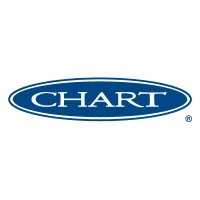NASDAQ:GTLS
Chart Industries Stock Price (Quote)
$153.52
+3.93 (+2.63%)
At Close: Apr 23, 2024
| Range | Low Price | High Price | Comment |
|---|---|---|---|
| 30 days | $145.19 | $168.61 | Tuesday, 23rd Apr 2024 GTLS stock ended at $153.52. This is 2.63% more than the trading day before Monday, 22nd Apr 2024. During the day the stock fluctuated 2.95% from a day low at $149.94 to a day high of $154.37. |
| 90 days | $110.18 | $168.61 | |
| 52 weeks | $106.69 | $184.65 |
| Date | Open | High | Low | Close | Volume |
| Apr 23, 2024 | $149.94 | $154.37 | $149.94 | $153.52 | 326 910 |
| Apr 22, 2024 | $148.35 | $151.85 | $146.61 | $149.59 | 255 179 |
| Apr 19, 2024 | $147.81 | $149.99 | $146.30 | $148.04 | 404 440 |
| Apr 18, 2024 | $148.50 | $152.88 | $147.09 | $148.57 | 432 357 |
| Apr 17, 2024 | $149.16 | $149.16 | $145.19 | $147.59 | 451 099 |
| Apr 16, 2024 | $148.59 | $150.64 | $145.56 | $148.16 | 505 181 |
| Apr 15, 2024 | $154.44 | $155.59 | $148.60 | $150.10 | 518 162 |
| Apr 12, 2024 | $155.15 | $156.98 | $151.93 | $154.31 | 379 537 |
| Apr 11, 2024 | $158.66 | $158.66 | $154.15 | $155.48 | 449 466 |
| Apr 10, 2024 | $156.47 | $159.20 | $154.76 | $159.05 | 384 655 |
| Apr 09, 2024 | $158.11 | $164.22 | $156.90 | $162.44 | 684 760 |
| Apr 08, 2024 | $157.14 | $158.56 | $155.65 | $157.68 | 356 694 |
| Apr 05, 2024 | $153.39 | $156.91 | $153.20 | $155.63 | 381 562 |
| Apr 04, 2024 | $159.07 | $160.99 | $153.22 | $153.31 | 427 954 |
| Apr 03, 2024 | $155.95 | $158.81 | $155.95 | $157.01 | 529 024 |
| Apr 02, 2024 | $158.68 | $159.21 | $156.23 | $156.83 | 398 378 |
| Apr 01, 2024 | $164.32 | $164.96 | $159.75 | $159.97 | 506 515 |
| Mar 28, 2024 | $165.00 | $168.61 | $163.71 | $164.72 | 540 232 |
| Mar 27, 2024 | $164.87 | $167.10 | $163.21 | $165.31 | 397 025 |
| Mar 26, 2024 | $161.04 | $164.12 | $158.96 | $163.05 | 385 332 |
| Mar 25, 2024 | $160.55 | $162.26 | $157.90 | $159.50 | 502 450 |
| Mar 22, 2024 | $156.35 | $160.57 | $156.35 | $159.42 | 670 966 |
| Mar 21, 2024 | $151.55 | $157.78 | $151.10 | $157.40 | 543 318 |
| Mar 20, 2024 | $147.05 | $151.06 | $144.10 | $151.06 | 580 359 |
| Mar 19, 2024 | $147.79 | $152.07 | $147.10 | $148.87 | 575 136 |

